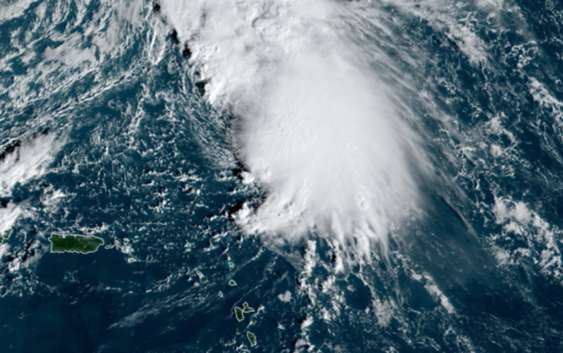- Mosquito activity on the rise due to rainfall, flooding across Texas
- Volunteers help Conroe community clean up in wake of flooding in Montgomery County
- Why leaders are urging NC residents to start hurricane prep now
- Storms could produce hail, damaging winds south of Charlotte
- Large hail and strong winds cause damage in San Marcos and the Hill Country
Sebastien may become 1st 'S' hurricane in Atlantic since Sandy

While the clock is ticking on Tropical Storm Sebastien before wind shear takes its toll, the storm has the potential to become the seventh hurricane of the 2019 Atlantic season.
Thus far, the 2019 Atlantic hurricane season has produced 20 tropical depressions, 18 named storms, six hurricanes and three major hurricanes as of Nov. 21. Already, this season is the most active in terms of named storms since 2012.
As of early Thursday morning, Tropical Storm Sebastien had maximum sustained winds of 60 mph with higher gusts and was moving on a north to northeast trajectory at 8 mph.
Sebastien, which is located about 360 miles to the north-northeast of the northern Leeward Islands, does not pose a threat to land. However, it won’t be the storm’s impacts that will be notable.
“The storm has the potential to become the seventh hurricane of the Atlantic season just before merging with an approaching cold front late Thursday into Friday,” Dan Kottlowski, AccuWeather’s top hurricane expert, said.
If it manages to strengthen, then Sebastien will become the first “S” hurricane since Sandy in 2012.
After peaking in strength before the end of the week, what is left of Sebastien will approach the Azores Saturday night and Sunday.
“By the time Sebastien reaches the Azores later this weekend, winds may be barely tropical storm or gale force,” Kottlowski said.
While there were a couple of other weak disturbances over the tropical Atlantic, tropical development is not anticipated through the end of November.
Hurricane season officially ends on Nov. 30 for the Atlantic Ocean. By then, strong wind shear usually dominates the prime development areas of the basin, effectively ending the threat for tropical systems to brew.